Strong M8.2 solar flare erupts from Region 3435
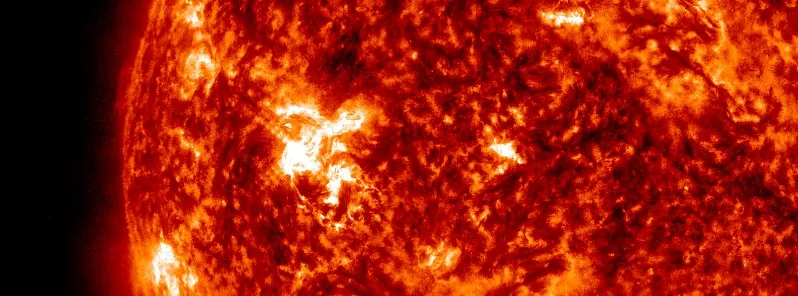
A strong solar flare measuring M8.2 erupted from Active Region 3435 at 14:19 UTC on September 20, 2023. The event started at 14:11 and ended at 14:25 UTC.
A Type II Radio Emission with an estimated velocity of 1 054 km/s was registered at 14:25 UTC. Type II emissions occur in association with eruptions on the sun and typically indicate a coronal mass ejection (CME) is associated with a flare event.
While the location of this region does not favor Earth-directed CMEs, it’s possible a part of it is heading our way.
LASCO coronagraph imagery is still not available. Analysis of the event is in progress.
The region is rotating toward the center of the disk so Earth-directed CMEs are possible from this region in the days ahead.
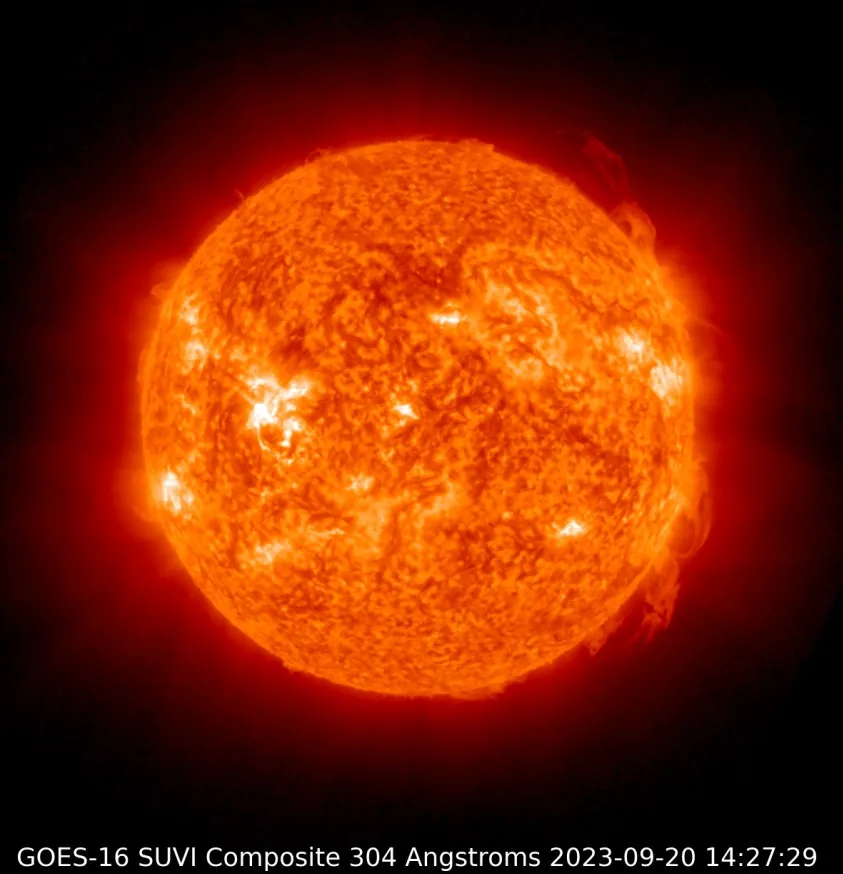
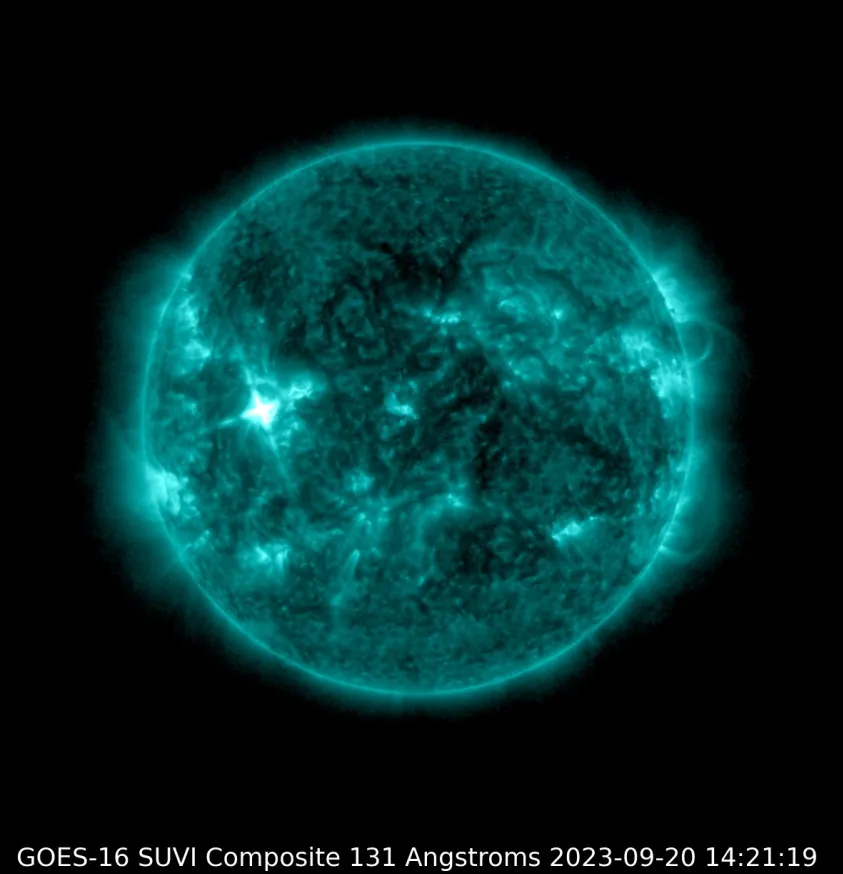
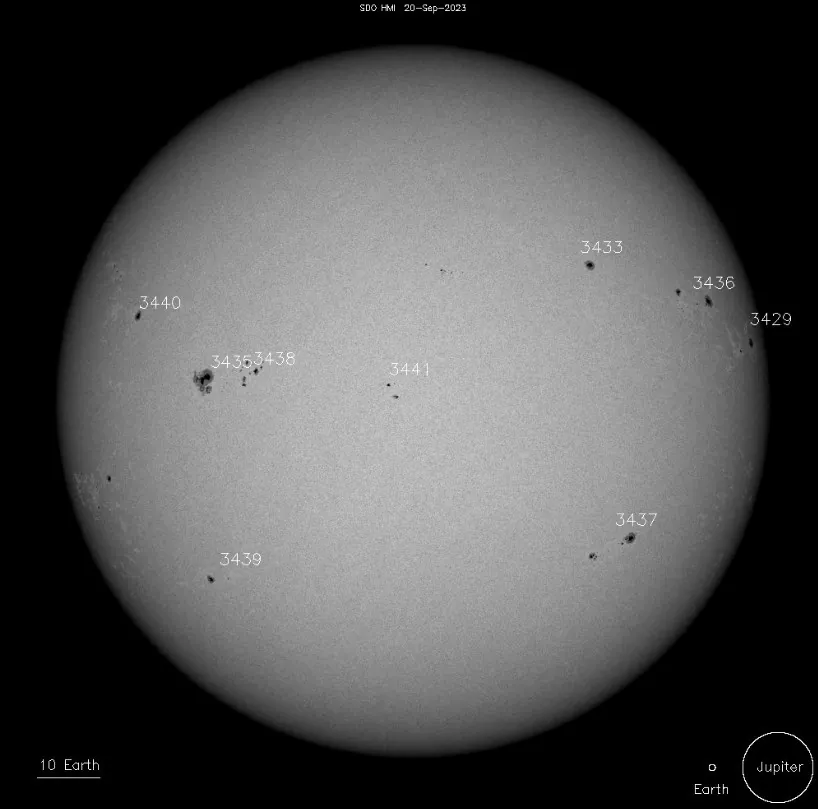
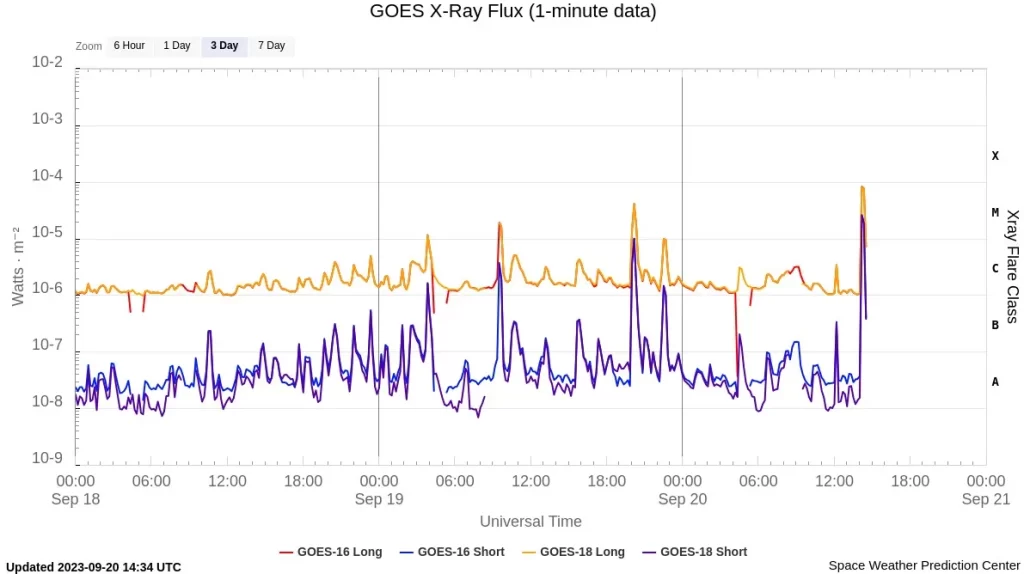
Radio frequencies were forecast to be most degraded over South America, the Atlantic Ocean, and parts of west Africa at the time of the flare.
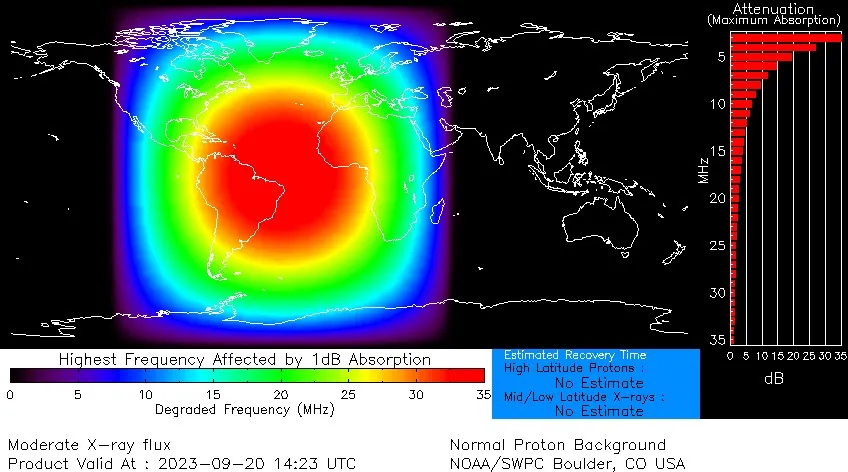
The same region was responsible for M4.0 solar flare at 20:14 UTC on September 19. A subsequent CME was first seen in SOHO/LASCO C2 imagery at 20:36 UTC. Modeling results determined no Earth-directed component, SWPC said.
In 24 hours to 12:30 UTC today, solar wind parameters indicated waning influence from a CME that left the Sun on September 16.
Solar wind enhancements from the passing CME are expected to trend back toward background levels on September 20 and 21. A further enhancement is likely on September 20 due to the anticipated onset of negative polarity coronal hole high speed stream (CH HSS).
You can follow space weather in near real-time using our redesigned SWX application at https://watchers.news/swx/.
Alerts, Watches and Warnings published by the SWPC as well as C+ solar flares are posted at https://twitter.com/SWXCenter (Twitter) and https://t.me/spaceweathermonitor (Telegram).
Featured image credit: NASA SDO/AIA 304

Commenting rules and guidelines
We value the thoughts and opinions of our readers and welcome healthy discussions on our website. In order to maintain a respectful and positive community, we ask that all commenters follow these rules.